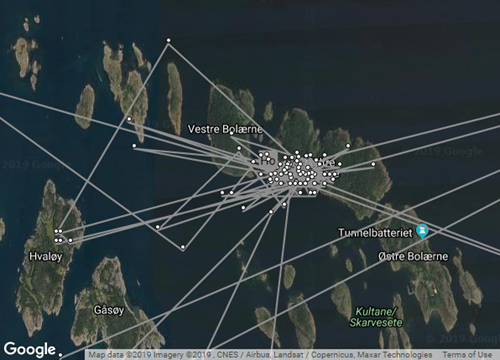Holkham was tagged in 2018 on the Holkham Estate in North Norfolk. She spent the following spring / summer island-hopping around Oslofjord, in Southern Norway She visited five different islands, as well as the mainland, with visits ranging in length from a few days to a month.

A cache of recently discovered, but previously unpublished data, reveals that Holkham has returned to the same location this spring. Instead of travelling from island to island, however, she immediately settled upon one, Bolærne, where she has spent the majority of spring 2019. She remained here through the latter half of April, May and June, suggesting she chose to nest at this location. We cannot be certain whether or not she was successful in her breeding attempt, but the fact that she has remained on the island for at least 100 days means that it is possible. It should take around 60 days for a female woodcock to raise young, from the laying of the first egg to the point where her chicks reach independence.
Hokham isn’t the only of our Norfolk-tagged woodcock currently spending the summer in Scandinavia. Nellie III, tagged in 2017, has returned to the same site in southern Sweden that s/he visited last year. This lies between Lake Vänern and Lake Vättern, Sweden’s largest and second largest lakes respectively. The landscape is characterised by a network of smaller lakes, extensive woodland and pastures. Nellie’s location data are clustered across three sites each around 8 km apart. The first was used from mid-March to mid-May, the second late-May to late-June, and the last during the first half of July. It’s difficult to say why Nellie has relocated like this, particularly since we can’t be certain of Nellie’s gender. Our tracking of resident woodcock in UK has shown that some displaying males do periodically relocate to new sites in search of females – this could be the case for Nellie. Equally, if female, Nellie may have relocated to a new site after a failed breeding attempt.